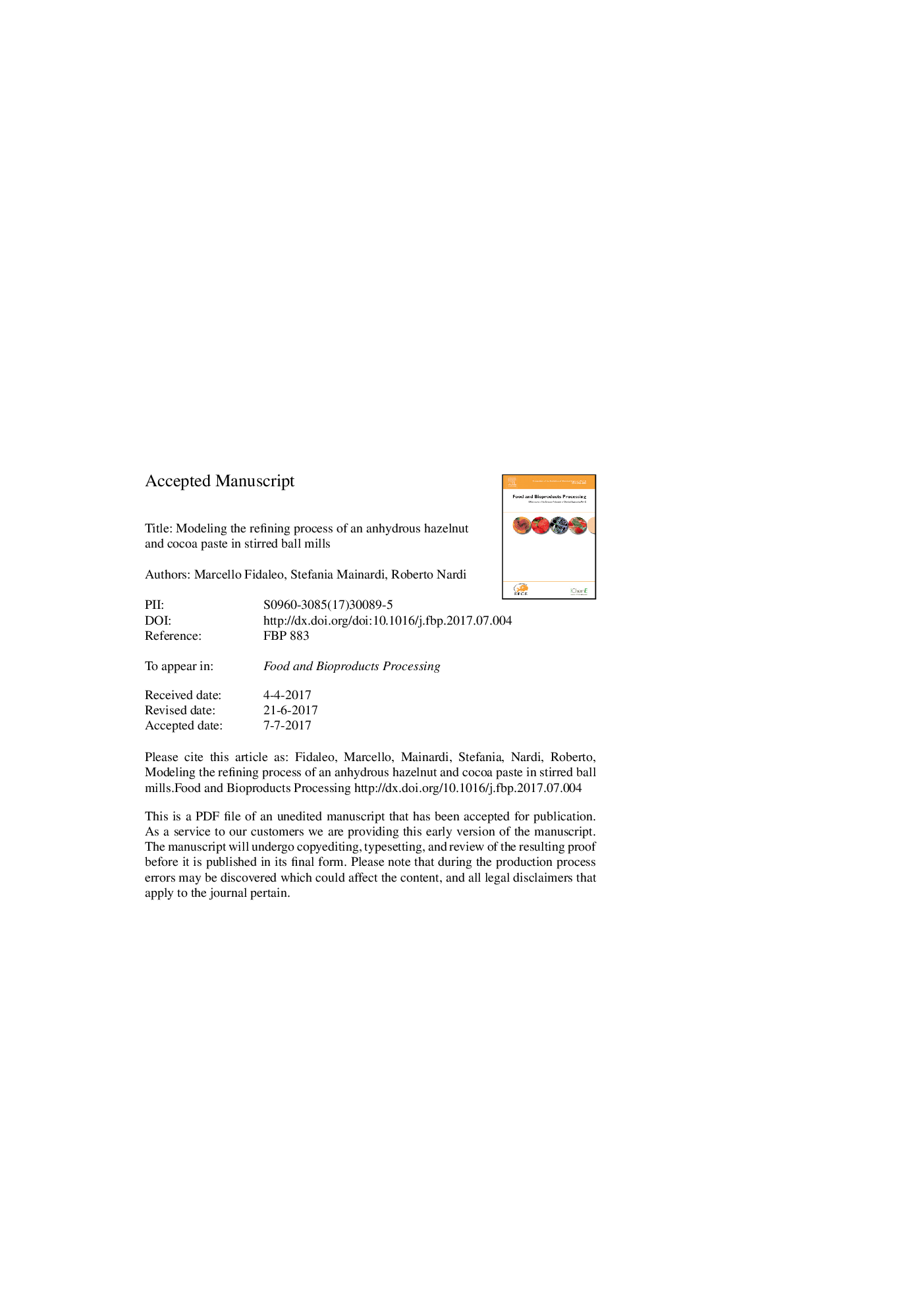| Article ID | Journal | Published Year | Pages | File Type |
|---|---|---|---|---|
| 4753023 | Food and Bioproducts Processing | 2017 | 34 Pages |
Abstract
The refining of an anhydrous hazelnut and cocoa paste in a pilot stirred ball mill was characterized by using a design of experiments approach. Data from a central composite design analyzed by response surface models allowed to assess that the main effects on the fineness (f) of the product refined for a preset time were negative for the shaft rotational speed (N) and grinding medium mass (S) and positive for the grinding medium diameter (D). A further analysis of the data allowed to develop an empirical model relating the fineness to the group D/(NCP), where CP is the ratio between S and the mass of refining paste (P), and time which was used successfully to predict the behavior of three industrial refiners. The product solids behaved as weak materials since the grinding rate was mainly affected by the number of collisions between the medium beads, proportional to the abovementioned group.
Related Topics
Physical Sciences and Engineering
Chemical Engineering
Bioengineering
Authors
Marcello Fidaleo, Stefania Mainardi, Roberto Nardi,
